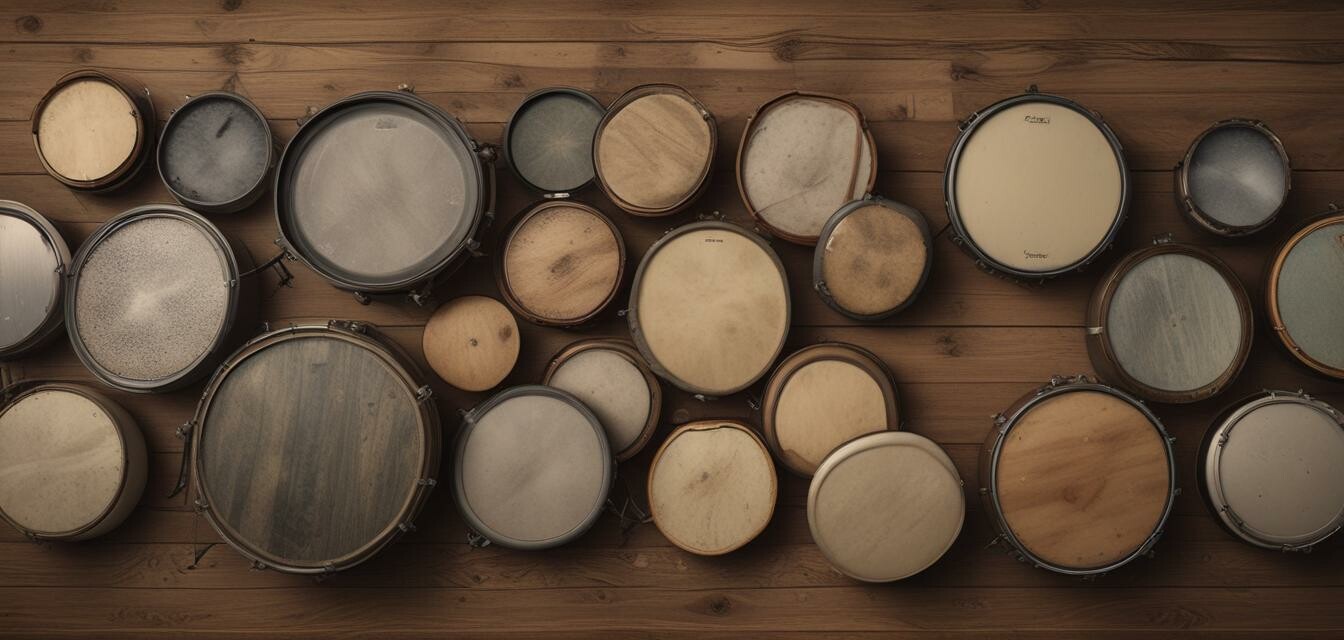
Understanding the different types of drum heads
Key Takeaways
- Drum heads are critical in shaping the sound of your drums.
- Different materials and textures result in various tonal characteristics.
- Regular maintenance and care can extend the life of your drum heads.
- Understanding the types of drum heads can help you choose the best one for your playing style.
Drum heads are one of the most essential components of a drum kit, impacting not only the sound but also the playability. In this article, we will explore the various types of drum heads, their characteristics, maintenance techniques, and how these factors affect the overall sound of your drums. Whether you’re a beginner or a seasoned drummer, understanding drum heads can help you achieve the best performance from your instrument.
Types of drum heads
Drum heads come in various types, with each designed to offer specific sounds and textures. They can typically be classified into two main categories: batter heads and resonant heads. Let's delve into each type.
| Type of Drum Head | Description | Best for |
|---|---|---|
| Batter Head | The head you strike with the drumsticks. These heads are designed for durability and response. | All styles of drumming, especially aggressive play. |
| Resonant Head | The head opposite the batter head, designed to enhance the sound’s sustain and projection. | Jazz and orchestral settings, for warmer tones. |
Common materials used in drum heads
The choice of material used for drum heads plays an essential role in defining the sound. Here are the most commonly used materials:
| Material | Characteristics | Sound Profile |
|---|---|---|
| Mylar | Durable and popular; most well-known drum head material. | Bright and focused sound. |
| Natural Skin | Traditional option made from animal hide; requires more maintenance. | Warm and rich tones, great for vintage sound. |
| Plastic | An affordable alternative, offering good consistency and durability. | Bright sound, commonly used in pop music. |
How drum head selection affects sound
The type and quality of drum head can significantly influence the sound your kit produces. Here are some key ways that drum head selection affects sound:
- Thickness: Thicker heads produce a lower pitch and reduce overtones, while thinner heads create a brighter, more resonant sound.
- One-ply vs. two-ply: One-ply heads provide a clearer tone with more sustain, while two-ply heads offer greater durability and a controlled sound.
- Coated vs. clear: Coated heads create a warmer, more muffled sound, while clear heads enhance projection and attack.
Drum head maintenance
Proper care for drum heads prolongs their life and maintains their performance. Here are some essential maintenance tips:
Beginner tips for drum head maintenance
- Regularly check for indentations and wear on the surface.
- Clean the drum heads with a soft cloth to avoid buildup of dirt and grime.
- Store your drums in a climate-controlled environment to prevent warping.
- Change drum heads when you notice significant wear or a change in sound quality.
- Experiment with tuning by adjusting the tension on the drum heads for desired sound profiles.
How to tune drum heads
Tuning your drum heads properly will ensure that you achieve the desired sound from your kit. Here are basic steps for tuning:
- Start by loosening the tension rods evenly.
- Retighten the tension rods in a star pattern to ensure even tension.
- Tap the drum head near each tension rod and listen for pitch differences.
- Adjust tension accordingly until the notes match and sound harmonious.
- Repeat as necessary for the desired tone and resonance.
Conclusion
Understanding the various types of drum heads, their materials, and maintenance is crucial for any drummer looking to improve their sound. Proper care and selection will help you enjoy playing music with the best tone possible. Don’t forget to check out more on instrument care and maintenance to keep your entire setup in top condition.
Pros
- Different drum heads can dramatically change the sound of your drums.
- Proper maintenance can extend the lifespan of your drum heads.
- Variety allows you to customize sounds for different musical styles.
Cons
- High-quality drum heads can be expensive.
- Maintaining and tuning drum heads requires time and effort.
- Improper tuning can lead to undesirable sounds.